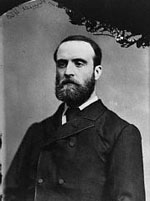Education Links
Leaving Cert
 Maths
Maths
 French
French
 English
English
 Chemistry
Chemistry
 Physics
Physics
 Biology
Biology
 Economics
Economics
 Spanish
Spanish
 Geography
Geography
 History
History
Junior Cert
| Land Acts | |
| Liberals | Conservatives |
| 1869 Disestablishment Act | 1885 Ashbourne Act |
| 1870 Land Act | 1891 Balfour Act |
| 1881 Land Act | 1903 Wyndham Act |
| 1909 Birrell | |
The process began with the Disestablishment Act of 1869. The main purpose of the act was to bring state support for the Church of Ireland to an end. The problem of how to deal with tenants on church lands was solved by granting them state loans to buy out their holdings. 6,000 did so. The Liberals had thus set a precedent which would eventually be seen as the solution to Ireland's land problem but large-scale loans to Irish tenant-farmers was no part of their plan in 1869.
In the 1870 Land Act the Liberals took a further step towards land purchase.

- They lent tenants two-thirds of the purchase price to buy out their holdings.
- The money would be repaid over 35 years at an interest rate of 5%.
- The idea was suggested by John Bright (pictured right), one of Gladstone's ministers and hence called the "Bright Clause".
- Its effect was minimal, however, as very few tenants had the necessary capital and only 877 bought their farms. The 1881 Land Act was slightly more generous. It offered:
- Three-quarters of the purchase price with the same length of time to repay and the same rate of interest (5%).
- Only 731 availed of the offer.
 It was the Conservatives who introduced land purchase on a major scale. In 1885 they had a minority government and needed the support of the Irish Home Rule Party in parliament. They also hoped that Parnell (pictured right) would urge Irish people in Britain to vote Conservative in the next general election. Chief Secretary Ashbourne introduced the Ashbourne Land Act in 1885 under which:
It was the Conservatives who introduced land purchase on a major scale. In 1885 they had a minority government and needed the support of the Irish Home Rule Party in parliament. They also hoped that Parnell (pictured right) would urge Irish people in Britain to vote Conservative in the next general election. Chief Secretary Ashbourne introduced the Ashbourne Land Act in 1885 under which:
- The government advanced £5 million for Irish land purchase.
- Tenants, for the first time, were granted the entire purchase price to be repaid over 49 years at 4%.
- The terms were so attractive that the government had to increase the sum allotted over the next few years.
- 25,000 tenants purchased their farms partly because it was now cheaper to buy than to rent their holdings. Repayments were only 70% of the old rent.
The Ashbourne Land Act showed that the principle of peasant proprietorship had become accepted as the solution to the land problem. When the Liberals and Gladstone returned to power he accompanied the First Home Bill 1886 with a massive land purchase scheme. However when the bill was defeated in the House of Commons so was this scheme.
The policy of land reform continued with the Conservatives. In 1891 Chief Secretary Balfour introduced the Balfour Act under which:
- £33 million was advanced for land purchase and tenants were again lent the whole of the purchase price over 49 years at 4%.
- A further 47,000 tenants bought between 1891 and 1903.
- £100 million was advanced for land purchase.
- Landlords were encouraged to sell whole estates by a bonus system of 12%.
- Tenants were advanced the whole purchase price at 3.25% over 68 years.
- If 75% of tenants were willing to buy and the landlord was willing to sell, the remaining tenants could continue to rent by paying their rent to the Land Commission.
- Almost 200,000 tenants bought their farms. Repayments were substantially less than the old rent.
- Landlords were willing to sell since they got good prices and payment in cash.
- Introduced compulsory purchase which obliged landlords to sell.
- A further 61,000 tenants purchased.
- The existing inequitable system of land distribution was perpetuated. Farmers who had previously rented large farms bought out their large farms; small farmers continued to farm the same few acres; a landless labourer was still landless.
- The Conservatives' policy was motivated by a desire to kill the demand for Home Rule.
- The policy was popular among landlords many of whom were anxious to sell their estates. The Conservatives were a landlord party and ensured that landlords were paid good prices.
The Field
Land has always had a special place in the Irish psyche. The feeling of dispossession was captured by John B. Keane in his play 'The Field' in which the Bull McCabe was ready to kill for a tiny plot of land. After years of tending his rented field a wealthy American outbids him and purchases the land from the owner. Violence and tragedy inevitably ensue as the Bull tries to get what is 'rightfully' his. The actual field used in the film version of the play is part of a 32 acre farm in the Erriff river valley in Linnane, Co. Mayo. It is about to be sold and several prospective buyers are dying to get their hands on it. However in real life it will cost you at least £300,000 to own the 'Field' (pictured left).
The actual field used in the film version of the play is part of a 32 acre farm in the Erriff river valley in Linnane, Co. Mayo. It is about to be sold and several prospective buyers are dying to get their hands on it. However in real life it will cost you at least £300,000 to own the 'Field' (pictured left).

